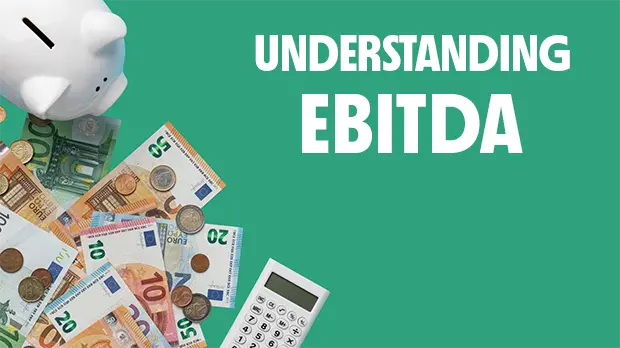
What is EBITDA? A Brief Guide for Small and Mid-Size Businesses
In the world of finance and business management, understanding key performance indicators is crucial for making informed decisions. One such important metric is EBITDA.
If you're a small or mid-size business owner, you've likely encountered this term, but might not fully grasp its significance. This comprehensive guide will demystify EBITDA, explain its calculation, and highlight its importance in assessing your company's financial health.
What does EBITDA mean?
EBITDA is an acronym that stands for Earnings Before Interest, Taxes, Depreciation, and Amortization. It's a measure of a company's overall financial performance and is used as an alternative to simple earnings or net income in some circumstances. EBITDA provides a clearer picture of a company's operational performance by excluding expenses that may obscure underlying profitability.
How to calculate EBITDA
Calculating EBITDA might seem daunting at first, but it's actually quite straightforward once you break it down. Let's explore the components and formulas used to determine this important financial metric.
EBITDA Formulas and Calculation
There are two primary methods to calculate EBITDA:
- Top-down approach: EBITDA = Net Income + Interest + Taxes + Depreciation + Amortization
- Bottom-up approach: EBITDA = Operating Profit + Depreciation + Amortization
Let's break down each component:
Earnings
This refers to the company's net income or profit, which is the amount of money left after all expenses have been deducted from revenue.
Before
The "before" in EBITDA indicates that we're looking at earnings prior to subtracting certain expenses.
Interest
This includes interest expenses on debt, such as loans or bonds.
Taxes
This refers to income taxes paid by the company.
Depreciation
Depreciation is the decrease in the value of tangible assets (like equipment or buildings) over time.
Amortization
Similar to depreciation, amortization is the decrease in the value of intangible assets (like patents or trademarks) over time.
Example Calculation of EBITDA #1
Let's walk through a simple example to illustrate how EBITDA is calculated:
Suppose Company ABC has the following financial information:
- Net Income: $500,000
- Interest Expense: $50,000
- Income Taxes: $150,000
- Depreciation: $75,000
- Amortization: $25,000
Using the top-down approach:
EBITDA = $500,000 + $50,000 + $150,000 + $75,000 + $25,000 = $800,000
Example Calculation of EBITDA #2
Now, let's use the bottom-up approach with different figures:
- Operating Profit: $700,000
- Depreciation: $100,000
- Amortization: $50,000
EBITDA = $700,000 + $100,000 + $50,000 = $850,000
Why Use EBITDA?
EBITDA has gained popularity as a financial metric for several reasons:
- Comparability: It allows for easier comparison between companies and industries by removing the effects of financing and accounting decisions.
- Focus on operations: EBITDA provides a clearer picture of operational performance by excluding non-operating expenses.
- Potential indicator: It can be used as a proxy for cash flow and a company's ability to service debt.
- Valuation tool: EBITDA is often used in business valuations and as a basis for financial ratios.
- Simplicity: It offers a quick snapshot of a company's financial health without delving into complex accounting details.
Common Mistakes When Calculating EBITDA
While EBITDA is a useful metric, it's important to avoid these common pitfalls:
- Overlooking non-recurring items: Failing to adjust for one-time expenses or gains can skew EBITDA.
- Ignoring working capital changes: EBITDA doesn't account for changes in working capital, which can affect cash flow.
- Misclassifying expenses: Incorrectly categorizing operating and non-operating expenses can lead to inaccurate EBITDA calculations.
- Relying solely on EBITDA: While valuable, EBITDA should be used in conjunction with other financial metrics for a comprehensive view.
- Neglecting industry-specific factors: Some industries may require additional adjustments to EBITDA for accurate comparisons.
What is the debt to EBITDA ratio (With Simple Definition and Example)
The debt to EBITDA ratio is a leverage ratio that measures a company's ability to pay off its incurred debt. A high ratio suggests that a company may be taking on too much debt.
Simple Definition: The debt to EBITDA ratio shows how many years it would take for a company to pay back its debt if EBITDA and debt levels remain constant.
Example:
- Company A has a total debt of $10 million and an EBITDA of $2 million.
- Debt to EBITDA ratio = $10 million / $2 million = 5
This means it would take Company A 5 years to pay off its debt using its EBITDA.
EBITDA vs. EBIT vs. EBT (With Simple Definition and Example)
Understanding the differences between EBITDA, EBIT, and EBT can help you gain a more comprehensive view of your company's financial performance.
EBITDA: Earnings Before Interest, Taxes, Depreciation, and Amortization EBIT: Earnings Before Interest and Taxes EBT: Earnings Before Taxes
Example: Let's say Company B has the following financial information:
- Revenue: $1,000,000
- Operating Expenses: $600,000
- Interest Expense: $50,000
- Taxes: $70,000
- Depreciation and Amortization: $80,000
Calculations:
- EBITDA = $1,000,000 - $600,000 + $80,000 = $480,000
- EBIT = $1,000,000 - $600,000 - $80,000 = $320,000
- EBT = $320,000 - $50,000 = $270,000
EBITDA vs. Operating Cash Flow (With Simple Definition and Example)
While both EBITDA and Operating Cash Flow are important metrics, they serve different purposes in financial analysis.
EBITDA: A measure of operational profitability that excludes non-operating expenses. Operating Cash Flow: The amount of cash generated by a company's normal business operations.
Example: Company C reports the following:
- EBITDA: $500,000
- Changes in Working Capital: -$100,000
- Interest Paid: -$30,000
- Taxes Paid: -$70,000
Operating Cash Flow = $500,000 - $100,000 - $30,000 - $70,000 = $300,000
In this case, while EBITDA shows strong operational performance, the Operating Cash Flow provides a more realistic picture of the cash generated by the business.
Tools and Resources for Calculating EBITDA
To streamline your EBITDA calculations, consider using these tools and resources:
- Financial software: QuickBooks, Xero, or FreshBooks often include EBITDA calculation features.
- Spreadsheet templates: Microsoft Excel and Google Sheets offer pre-built templates for financial calculations, including EBITDA.
- Online calculators: Websites like Calculator.net provide free EBITDA calculators.
- Financial dashboards: Tools like Tableau or Power BI can create visual representations of your EBITDA and other financial metrics.
- Professional services: Consult with accountants or financial advisors for expert assistance in calculating and interpreting EBITDA.
Conclusion
Recap of key points
- EBITDA stands for Earnings Before Interest, Taxes, Depreciation, and Amortization.
- It can be calculated using either a top-down or bottom-up approach.
- EBITDA is useful for comparing companies and assessing operational performance.
- Common mistakes in calculating EBITDA include overlooking non-recurring items and ignoring working capital changes.
- EBITDA should be used in conjunction with other financial metrics for a comprehensive financial analysis.
Final thoughts on the importance of EBITDA
EBITDA is a powerful tool for small and mid-size businesses to gauge their financial health and operational efficiency.
By providing a clearer picture of a company's core profitability, EBITDA allows for easier comparisons across industries and companies of different sizes.
However, it's crucial to remember that EBITDA is just one piece of the financial puzzle. To make truly informed decisions, combine EBITDA with other financial metrics and a thorough understanding of your industry's specific challenges and opportunities.
FAQs
What Is a Good EBITDA?
A "good" EBITDA varies by industry and company size. Generally, a higher EBITDA margin (EBITDA divided by total revenue) indicates stronger profitability. Many investors consider an EBITDA margin of 10% or higher to be healthy, but this can vary significantly across sectors.
What Is the Difference Between EBITDA and EBITA? (With Definition and Example)
EBITDA includes both depreciation and amortization, while EBITA only adds back amortization.
Example: Company ABC reports:
- Net Income: $1,000,000
- Interest: $200,000
- Taxes: $300,000
- Depreciation: $150,000
- Amortization: $50,000
EBITDA = $1,000,000 + $200,000 + $300,000 + $150,000 + $50,000 = $1,700,000
EBITA = $1,000,000 + $200,000 + $300,000 + $50,000 = $1,550,000
Is EBITDA the Same As Gross Profit?
No, EBITDA and Gross Profit are different metrics. Gross Profit is calculated by subtracting the cost of goods sold (COGS) from revenue. EBITDA, on the other hand, takes into account operating expenses but excludes interest, taxes, depreciation, and amortization.
What Is Amortization in EBITDA?
In the context of EBITDA, amortization refers to the process of spreading the cost of an intangible asset over its useful life. This could include items such as patents, copyrights, or goodwill. By adding back amortization, EBITDA aims to provide a clearer picture of a company's operational performance without the impact of these non-cash expenses.
How Often Should I Calculate EBITDA for My Business?
For most small and mid-size businesses, calculating EBITDA quarterly or annually is sufficient. However, if your company is going through significant changes, experiencing rapid growth, or facing financial challenges, you might want to calculate EBITDA more frequently, such as monthly, to keep a closer eye on your operational performance

 Rohit Kapoor
Rohit Kapoor

